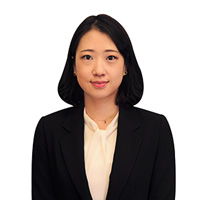Money moving to savings as ultralow rate era nears end
Banks’ lending rates sharply inch up after BOK’s rate hike, driving up preference for savings
By Choi Jae-heePublished : Nov. 2, 2021 - 14:27

South Korean banks’ lending rates neared 5 percent following the central bank’s first pandemic-era rate hike in August, which ramped up cash flows into bank deposits, data showed Tuesday.
The adjustable rate charged on mortgage loans extended by the nation’s four major banks -- KB Kookmin Bank, Shinhan, Hana and Woori -- remained between 3.31 and 4.8 percent, as of Monday. Both the bottom and upper ends of the range rose nearly 0.6 percentage point from 2.62 to 4.2 percent estimated in the end of August, industry data showed.
Meanwhile, the interest rate for personal credit loans provided by one of the commercial banks here posted a 3.68 to 4.68 percent range on the same day, up 0.21 percentage point from the previous day, which is normally considered as “an unprecedented increase,” according to industry sources.
Higher barriers for loans came as the Bank of Korea, in August, ended 15 months of record-low interest rates by raising its key rate by 0.25 percentage point to 0.75 percent, citing a solid economic recovery track, rising inflation and worsening financial imbalances.
Possibilities remain high that the rate of interest on bank loans could extend an upward trend next year, BOK officials said, citing the central bank chief. BOK Gov. Lee Ju-yeol recently said the central bank’s monetary board could consider a rate hike in November if the Korean economy remains on the current recovery path.
The government’s tightening grip on household loans is another driver of the recent surge in the banks’ lending rates, data showed.
Under pressure from financial authorities seeking to curb soaring household debt, the banks have raised the “additional interest rate,” which is placed on borrowers depending on their credibility. For instance, the additional interest rate for credit loans offered by Shinhan Bank and KB Kookmin Bank increased 0.52 percentage point and 0.4 percentage point on–year in July, respectively, according to the Korea Federation of Banks.
Facing higher lending rates, a growing number of Koreans have resorted to parking their money in safe places.
The balance of savings accounts, including time deposits and installment savings, at the nation’s four major lenders, stood at 1,751.3 trillion won ($1.49 trillion) in October, gaining more than 25 trillion won from a month ago.
Market experts say money moving from equities to banks is likely to be expedited amid a higher interest rate environment.
“Investors will be less likely to focus on risky assets through lending for the time being as the central bank has made an additional rate increase amid growing expectation of the US Fed‘s earlier-than-expected tapering. People’s preference for safe assets may continue to rise,” said Oh Jung-geun, a professor of IT and finance at Konkuk University.
The adjustable rate charged on mortgage loans extended by the nation’s four major banks -- KB Kookmin Bank, Shinhan, Hana and Woori -- remained between 3.31 and 4.8 percent, as of Monday. Both the bottom and upper ends of the range rose nearly 0.6 percentage point from 2.62 to 4.2 percent estimated in the end of August, industry data showed.
Meanwhile, the interest rate for personal credit loans provided by one of the commercial banks here posted a 3.68 to 4.68 percent range on the same day, up 0.21 percentage point from the previous day, which is normally considered as “an unprecedented increase,” according to industry sources.
Higher barriers for loans came as the Bank of Korea, in August, ended 15 months of record-low interest rates by raising its key rate by 0.25 percentage point to 0.75 percent, citing a solid economic recovery track, rising inflation and worsening financial imbalances.
Possibilities remain high that the rate of interest on bank loans could extend an upward trend next year, BOK officials said, citing the central bank chief. BOK Gov. Lee Ju-yeol recently said the central bank’s monetary board could consider a rate hike in November if the Korean economy remains on the current recovery path.
The government’s tightening grip on household loans is another driver of the recent surge in the banks’ lending rates, data showed.
Under pressure from financial authorities seeking to curb soaring household debt, the banks have raised the “additional interest rate,” which is placed on borrowers depending on their credibility. For instance, the additional interest rate for credit loans offered by Shinhan Bank and KB Kookmin Bank increased 0.52 percentage point and 0.4 percentage point on–year in July, respectively, according to the Korea Federation of Banks.
Facing higher lending rates, a growing number of Koreans have resorted to parking their money in safe places.
The balance of savings accounts, including time deposits and installment savings, at the nation’s four major lenders, stood at 1,751.3 trillion won ($1.49 trillion) in October, gaining more than 25 trillion won from a month ago.
Market experts say money moving from equities to banks is likely to be expedited amid a higher interest rate environment.
“Investors will be less likely to focus on risky assets through lending for the time being as the central bank has made an additional rate increase amid growing expectation of the US Fed‘s earlier-than-expected tapering. People’s preference for safe assets may continue to rise,” said Oh Jung-geun, a professor of IT and finance at Konkuk University.


















